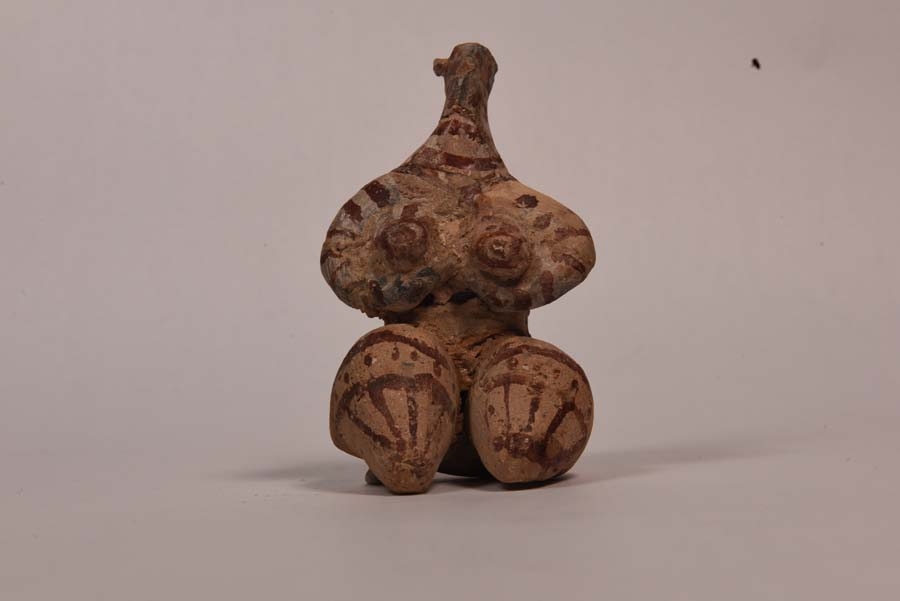ArtReview sent a questionnaire to artists and curators exhibiting in and curating the various national pavilions of the 2017 Venice Biennale, the responses to which will be published daily in the lead-up to the Venice Biennale opening (13 May – 26 November).
Tamara Chalabi and Paolo Colombo are the curators of the Iraq pavilion, commissioned by the Ruya Foundation. Under the title Archaic, the exhibition will feature work by Francis Alÿs, Jewad Selim, Shakir Hassan al-Said, Sadik alFraiji, Sherko Abbas, Sakar Sleiman, Nadine Hattom, Luay Fadhil, Ali Arkady, alongside antiquities for the Iraq Museum. The pavilion is located at Palazzo Cavalli Franchetti, 3rd floor, San Marco 2847.
What can you tell us about your exhibition plans for Venice?
The Iraq Pavilion, under the title Archaic, will show the work of eight modern and contemporary Iraqi artists in dialogue with 40 ancient Iraqi artefacts on loan from the Iraq Museum and spanning six millennia, from the Neolithic Age to the Neo-Babylonian Period. Most of these objects have never left Iraq, excluding a few that were recently recovered after the 2003 lootings of the Museum. The exhibition will also be accompanied by a new commission by Francis Alÿs focusing on the artist’s role in war. It is the result of a military embed that Alÿs undertook on the Mosul front line, organised by the Ruya Foundation.
How is making a show for the Venice Biennale different to preparing a ‘normal’ exhibition? Or another biennial?
Most exhibitions have a sense of place. Venice, curiously, is a ‘non place’, an international arena connected to its location only as a (very beautiful) backdrop.
There are a huge number of biennial exhibitions across the world nowadays. Do you think the Venice Biennale still has a special status, and why?
Yes, in part because of its history and, up to a point, because even as globalisation undermines national identities Venice is one of the last biennials to have national pavilions. In other biennials (like São Paulo for example) these have been cancelled, under the pretence that art is international. Of course the art market has a wide international base inasmuch as liquid capital is international but, in fact, art has roots, just as much as mother tongues maintain a root in a territory. This is particularly important for nations states such as Iraq, who may not have other opportunities or platforms to exhibit and promote their artists outside of a commercial framework. Other biennials tend to be curated entirely which doesn’t necessarily allow for more exposure to different parts of the world.
What does it mean to ‘represent’ your country? Do you find it an honour or is it problematic?
We are not sure we would use either word in the way you’ve put them to describe what it means to represent ‘my country’, especially since neither of us come from just one place. It’s a very interesting challenge, that’s the honour.
The Venice audience is a diverse group. Who is most important to you? The artists, the gallerists, curators and critics concentrated around the opening, or the general public which visits in the months that follow?
First and foremost, our role as curators addresses artists, and the exhibition as an organic whole. The readability of the show makes it so that it can ricochet into an easier understanding on the part of the public. Collectors and galleries are part of that public, a part that is most likely aware and educated, but also a part with a vested interest. The fact that the exhibition stays open for 7 months is important for giving access to as many different types of people as possible. It opens the door to different perceptions from all those type of visitors you’ve listed.
Did you visit the last Venice Biennale? What’s your earliest or best memory from Venice?
We both visited last year but of course have different first memories. Tamara’s earliest memory is the 1990 Biennale which she visited when she was still at school and was very moved by. Particularly in the Giardini, it was powerful to see all these countries communicating visually in a unique collective space and she still has her sketch book from that visit, pages filled with drawings and notes. Paolo’s first biennale was when he was thirteen years old, in 1962. Is it possible there was a room of works by Odilon Redon? That is what he remembers…
How does a having a pavilion in Venice make a difference to the art scene in your home country?
It makes a tremendous difference for a country like Iraq which has been isolated from the international cultural scene for many decades. A pavilion in Venice gives exposure on a very different level to anything local, but also challenges many preconceived local notions of contemporary exhibitions. The reactions of the press and visitors is also very important, and can often challenge the local art scene that traditionally views the biennale as a competition of the best artists, like the Olympics, which it is not.
You’ll no doubt be very busy, but what else are you looking forward to seeing?
The central pavilions in the Giardini and Arsenale. The work of Mark Bradshaw at this critical time in the US’s history, and the same for Phyllida Barlow at the British pavilion. Takahiro Iwasaki for Japan, Austria because of Erwin Wurm’s work and Frank Walter: the Last Universal Man at the pavilion of Antigua and Barbuda.
Click here to read all our questionnaires published so far
12 April 2017
